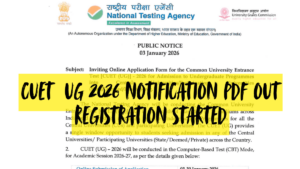The Second Battle of Panipat, fought on November 5, 1556, was a pivotal conflict in Indian history between the Mughal Emperor Akbar and the forces of Hemu, a Hindu king. Following the death of Akbar’s regent Bairam Khan, Hemu sought to reclaim Delhi for the Afghan Suri Dynasty. The battle took place near the town of Panipat, Haryana. Despite initial successes, Hemu was struck in the eye by an arrow and captured, leading to his defeat. This victory solidified Akbar’s rule and marked the beginning of the Mughal Empire’s dominance in India, shaping the region’s future significantly.
Second Battle of Panipat was fought between
The Hindu ruler Samrat Hem Chandra Vikramaditya, often known as Hemu, who governed North India from Delhi, and the army of Akbar fought the Second Battle of Panipat. On November 5, 1556, it took place. Hemu had just captured the provinces of Delhi and Agra in the Battle of Delhi, beating the Mughals led by Tardi Beg Khan, and named himself Raja Vikramaditya during a coronation in Purana Quila in Delhi. When Akbar and his guardian Bairam Khan learned of the loss of Agra and Delhi, they marched to Panipat to reclaim the domains. The two armies met in Panipat, not far from the site of the 1526 First Battle of Panipat. The generals of Akbar achieved a tremendous victory.
The Second Battle of Panipat was fought between
Hemu launched the attack himself, scattering his elephants among the Mughals’ right and left flanks. Instead of withdrawing, those troops who were able to flee the rampage chose to turn to the sides and attack Hemu’s cavalry’s flanks, pelting them with their superior archery. The Mughal centre moved forward as well, taking up a defensive position in front of a steep ravine. Hemu’s elephant and horse units were unable to cross the chasm in order to reach their opponents, leaving them susceptible to projectile weapons thrown from the other side. Meanwhile, the Mughal cavalry, riding quick mounts, had made inroads into the Afghan ranks from both the flanks and the rear and began attacking the elephants, slicing at their legs or killing their riders. Hemu was forced to retreat with his elephants, and the Afghan assault was called off.
Ali Quli Khan led his cavalry out, circled around and descending onto the Afghan centre from behind, seeing the Afghan charge slacken. Hemu, who was watching the battleground, moved quickly to counter the charge. Even after Shadi Khan Kakkar and Bhagwan Das were killed, he continued to lead counter-attacks against the Mughals, annihilating anyone who dared to challenge his elephants.
Despite the fact that it was a fiercely fought combat, Hemu appeared to have the upper hand. Hemu and his forces had a numerical advantage. Hemu, on the other hand, was struck by an arrow in the middle of the combat and knocked out. His army panicked and dispersed as they saw their leader fall. Bairam Khan seized Hemu while he was unconscious and nearly dead, and then beheaded him. The Mughals were victorious in this battle.
Second Battle of Panipat 1556: Result
Adil Shah’s fortunes likewise took a turn for the worst after Hemu died. In April 1557, he was defeated and slain by Khizr Khan, the son of Bengal’s Muhammad Khan Sur. 120 of Hemu’s war elephants were among the spoils of the fight of Panipat, and their devastating rampages so enthralled the Mughals that the beasts soon became a vital part of their military plans.
Read About: Biggest Platform in India









 NEET UG 2026 Registration: NTA releases ...
NEET UG 2026 Registration: NTA releases ...
 CUET UG 2026 Online Registration Started...
CUET UG 2026 Online Registration Started...
 CUET 2026 Free Batches Launched by CUET ...
CUET 2026 Free Batches Launched by CUET ...














